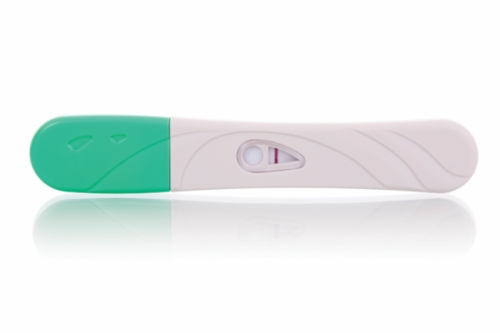Meet the crystal balls of modern medicine: at-home fertility tests. Women contemplating pregnancy can use these pee-on-a-stick tests to take instant snapshots of their reproductive ability. The tests, which work like at-home pregnancy tests, measure urine levels of FSH, a hormone related to ovarian aging and function.
But a new study from UNC shows that over-the-counter fertility predictors may be inaccurate. Moreover, the tests may not be measuring the strongest predictor of female fertility.
Anne Steiner studies the fertility of women in their thirties and forties. She recreated the home fertility tests while studying one hundred women and their chances of getting pregnant in any given cycle. High urine FSH levels are thought to be a sign of infertility, but Steiner found that women with higher FSH levels were no less likely to get pregnant than women with normal levels.
Steiner says another hormone, AMH, may be a better measure of a woman’s fertility. Unfortunately, AMH can only be measured through blood, and a blood test has not yet been approved for clinical use.
In Steiner’s study, women with low AMH levels were 60 percent less likely to get pregnant in any given cycle. “AMH comes directly from the ovary, whereas FSH comes from the pituitary gland,” Steiner says. “AMH is the first to decline, which means AMH may be a more sensitive marker in egg decline.”
But the best fertility predictor a woman has can’t be found in the drugstore. “I can’t support or discredit fertility tests,” Steiner says. “But I can say that age is the best predictor we have. We know that fertility begins to decline in the early thirties, then more rapidly by the time a woman is in her forties. But what we don’t have yet is a test to give thirty-eight-year-old women that says, ‘Yes, you’re still fertile.’”
Steiner hopes her research will lead to more choices for women. “We want to find fertility markers,” she says. “If a woman can have a better measure, we can ultimately allow women, and couples, more reproductive control.”
Stephanie Soucheray-Grell is a master’s student in medical and science journalism.
Anne Steiner is an assistant professor of obstetrics and gynecology in the School of Medicine. Steiner’s study tracks hundreds of women between the ages of thirty and forty-five from the time they begin trying to get pregnant until they achieve pregnancy.


